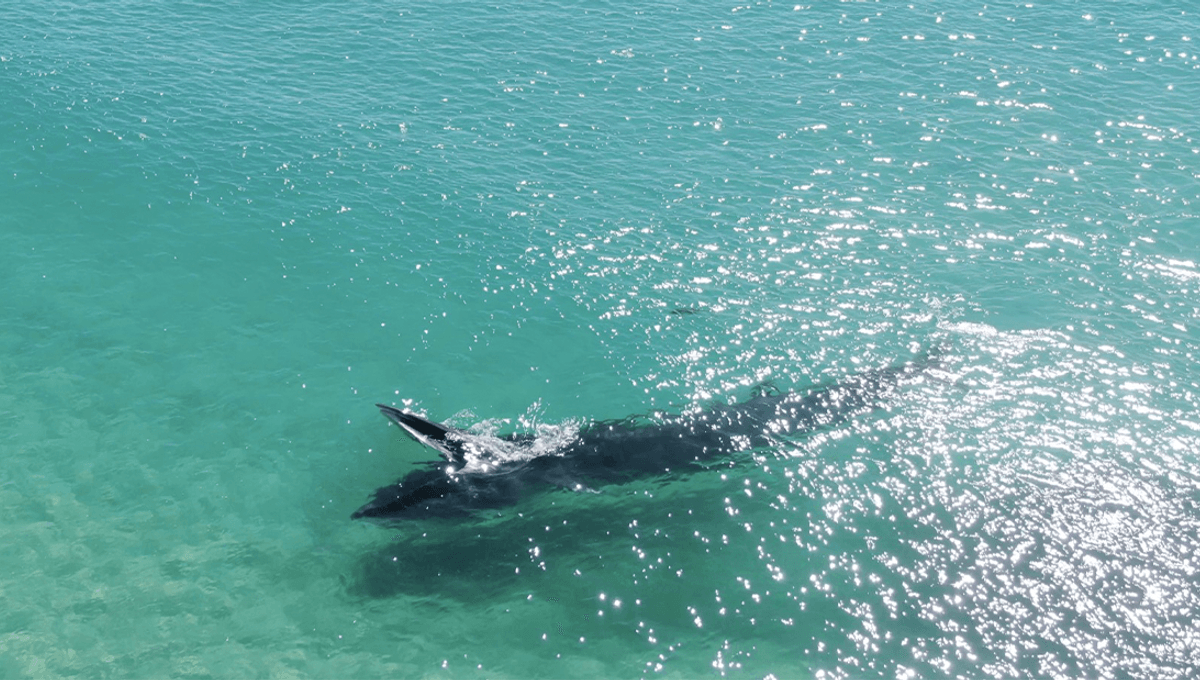
Just because a creature is big, doesn’t mean we necessarily know a lot about it. In the case of the elusive, but still 16-meter-long (52-foot) Bryde’s whales (Balaenoptera edeni), they are even considered the least known of all the large baleen whale species. Now, with the help of some citizen science, researchers have been able to find out more about their feeding habits and it turns out they’ve been doing some surfing.
Whales across the world have all sorts of spectacular feeding methods, from creating impressive bubble spirals, to headstands, and even accidentally scooping up seals – these marine giants have an answer for everything. This new feeding behaviour from the Bryde’s whales sees them feeding either within, or just behind the surf break, a new technique the researchers are calling shallow water surf feeding.
Bryde’s whales (pronounced “broodus”) are considered the only “tropical” baleen whale because they spend much of their time in the warm coastal waters around the North and South Pacific, Indian Ocean, as well as the South and North Atlantic. Other species of whales are known to migrate to follow schools of fish and krill; Bryde’s whales, while previously considered migratory, are thought to remain in roughly the same area year-round, and have different tactics for catching prey within seasonal changes.
Despite this, very little is known about Bryde’s whales in general and less about them in Australian waters. Citizen science and new technology such as drones has provided the team with a new insight into what the whales are getting up to on the Australian east coast.
A total of 15 shallow water surf feeding moments were collected from over 200 photos and over an hour of drone footage from citizen scientists, taken between 2012 and 2021. The whales were seen moving within the waves, using the momentum of the water to help with feeding on a bait ball. The team think that it’s possible that the surf is helping the whales to feed.
“We observed whales moving with the surf as they fed, sometimes holding their mouths open for extended periods while they were skimming the surface,” said lead author Dr Vanessa Pirotta from Macquarie University’s Marine Predator Research Group in a statement sent to IFLScience. “This shallow water ‘surfing’ behaviour hasn’t been documented before in Bryde’s whales, and it shows just how adaptable they are in gathering coastal food sources.”
As well as “surfing” the whales were also observed lunge feeding, particularly turning to their right sides with their mouths wide open. Observations were even seen of mother and calf pairs, suggesting that these waters could be important as calving habitats.
“Seeing mothers with calves shows us that some parts of the Australian east coast might be an important nursing area for Bryde’s whales, and might even play a role in calving,” continued Pirotta.
This study helps to support the idea that Bryde’s whales remain in Australian waters all year round and could be used to help inform conservation and policy for their continued protection especially given the popularity of water-based activities in Australia.
“We know very little about Bryde’s whales in Australian waters. Seeing them feed in shallow and deep water environments is incredible. This research will directly assist with their protection in our blue backyard,” Pirotta told IFLScience. “This study highlights the power of citizen science to provide knowledge about a species we know very little about.”
The study is published in the New Zealand Journal of Marine and Freshwater Research.
Source Link: Rare Bryde’s Whales Seen “Surfing” In Australian Waters Thanks To Citizen Science